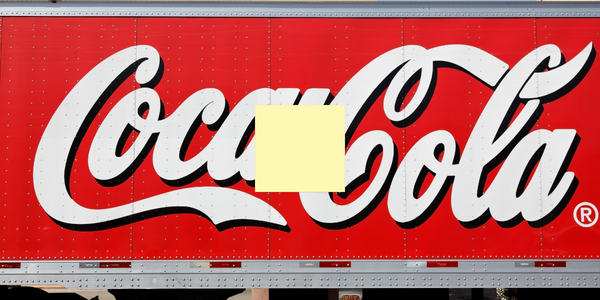Download PDF
Full Service Solutions Contribute to Optimal Warehouse Efficiency
Technology Category
- Functional Applications - Remote Monitoring & Control Systems
- Functional Applications - Warehouse Management Systems (WMS)
Applicable Industries
- Food & Beverage
Applicable Functions
- Warehouse & Inventory Management
- Logistics & Transportation
Use Cases
- Warehouse Automation
- Fleet Management
- Inventory Management
Services
- System Integration
- Hardware Design & Engineering Services
The Challenge
Fabiano Brothers faced significant productivity challenges as they consolidated their operations from four facilities into two, totaling 390,000 square feet. The primary goal was to maintain their annual beer sales of about eight and a half million cases while optimizing space and increasing lift truck productivity. Additionally, they aimed to enhance the productivity of their order picking process and implement ergonomic lift trucks to reduce operator stress. The company needed a comprehensive solution that would integrate receiving, replenishment, and racking to achieve increased efficiency, cost savings, and productivity.
About The Customer
Fabiano Brothers, Inc. is a family-owned beverage distribution company established in 1885. With over 125 years of experience, the company is a premier distributor in central and northern Michigan and central Wisconsin. Under the leadership of the fourth generation of the Fabiano family, Fabiano Brothers has grown to become a significant player in the beverage distribution industry. The company operates out of two consolidated facilities, with a primary headquarters of 300,000 square feet dedicated to beer sales and a secondary facility for wine distribution. Fabiano Brothers is committed to maintaining its tradition and integrity while embracing new technologies to optimize its operations.
The Solution
Fabiano Brothers turned to Andersen Material Handling, a Raymond authorized Sales and Service Center, to re-evaluate and optimize their material handling needs. Andersen recommended implementing Raymond Model 4700 sit-down counterbalanced lift trucks with Cascade Single-Double Pallet Handlers to unload twice as many pallets at once, significantly reducing unloading time. For order picking, Raymond Model 8400 end-rider pallet trucks with custom forks were designed to carry four retail delivery carts at once, doubling the picking rate. To maximize warehouse space and efficiency, Raymond Model 4200 stand-up counterbalanced lift trucks were suggested for their sleek design and clear view mast, allowing for greater height lifting and easy maneuvering through two-lane aisles. The integration of these solutions, along with a voice-picking system, ensured a seamless and productive operation.
Operational Impact
Quantitative Benefit
Related Case Studies.

Case Study
The Kellogg Company
Kellogg keeps a close eye on its trade spend, analyzing large volumes of data and running complex simulations to predict which promotional activities will be the most effective. Kellogg needed to decrease the trade spend but its traditional relational database on premises could not keep up with the pace of demand.

Case Study
HEINEKEN Uses the Cloud to Reach 10.5 Million Consumers
For 2012 campaign, the Bond promotion, it planned to launch the campaign at the same time everywhere on the planet. That created unprecedented challenges for HEINEKEN—nowhere more so than in its technology operation. The primary digital content for the campaign was a 100-megabyte movie that had to play flawlessly for millions of viewers worldwide. After all, Bond never fails. No one was going to tolerate a technology failure that might bruise his brand.Previously, HEINEKEN had supported digital media at its outsourced datacenter. But that datacenter lacked the computing resources HEINEKEN needed, and building them—especially to support peak traffic that would total millions of simultaneous hits—would have been both time-consuming and expensive. Nor would it have provided the geographic reach that HEINEKEN needed to minimize latency worldwide.

Case Study
Energy Management System at Sugar Industry
The company wanted to use the information from the system to claim under the renewable energy certificate scheme. The benefit to the company under the renewable energy certificates is Rs 75 million a year. To enable the above, an end-to-end solution for load monitoring, consumption monitoring, online data monitoring, automatic meter data acquisition which can be exported to SAP and other applications is required.

Case Study
Coca Cola Swaziland Conco Case Study
Coco Cola Swaziland, South Africa would like to find a solution that would enable the following results: - Reduce energy consumption by 20% in one year. - Formulate a series of strategic initiatives that would enlist the commitment of corporate management and create employee awareness while helping meet departmental targets and investing in tools that assist with energy management. - Formulate a series of tactical initiatives that would optimize energy usage on the shop floor. These would include charging forklifts and running cold rooms only during off-peak periods, running the dust extractors only during working hours and basing lights and air-conditioning on someone’s presence. - Increase visibility into the factory and other processes. - Enable limited, non-intrusive control functions for certain processes.

Case Study
Temperature Monitoring for Restaurant Food Storage
When it came to implementing a solution, Mr. Nesbitt had an idea of what functionality that he wanted. Although not mandated by Health Canada, Mr. Nesbitt wanted to ensure quality control issues met the highest possible standards as part of his commitment to top-of-class food services. This wish list included an easy-to use temperature-monitoring system that could provide a visible display of the temperatures of all of his refrigerators and freezers, including historical information so that he could review the performance of his equipment. It also had to provide alert notification (but email alerts and SMS text message alerts) to alert key staff in the event that a cooling system was exceeding pre-set warning limits.

Case Study
Coca-Cola Refreshments, U.S.
Coca-Cola Refreshments owns and manages Coca-Cola branded refrigerators in retail establishments. Legacy systems were used to locate equipment information by logging onto multiple servers which took up to 8 hours to update information on 30-40 units. The company had no overall visibility into equipment status or maintenance history.




